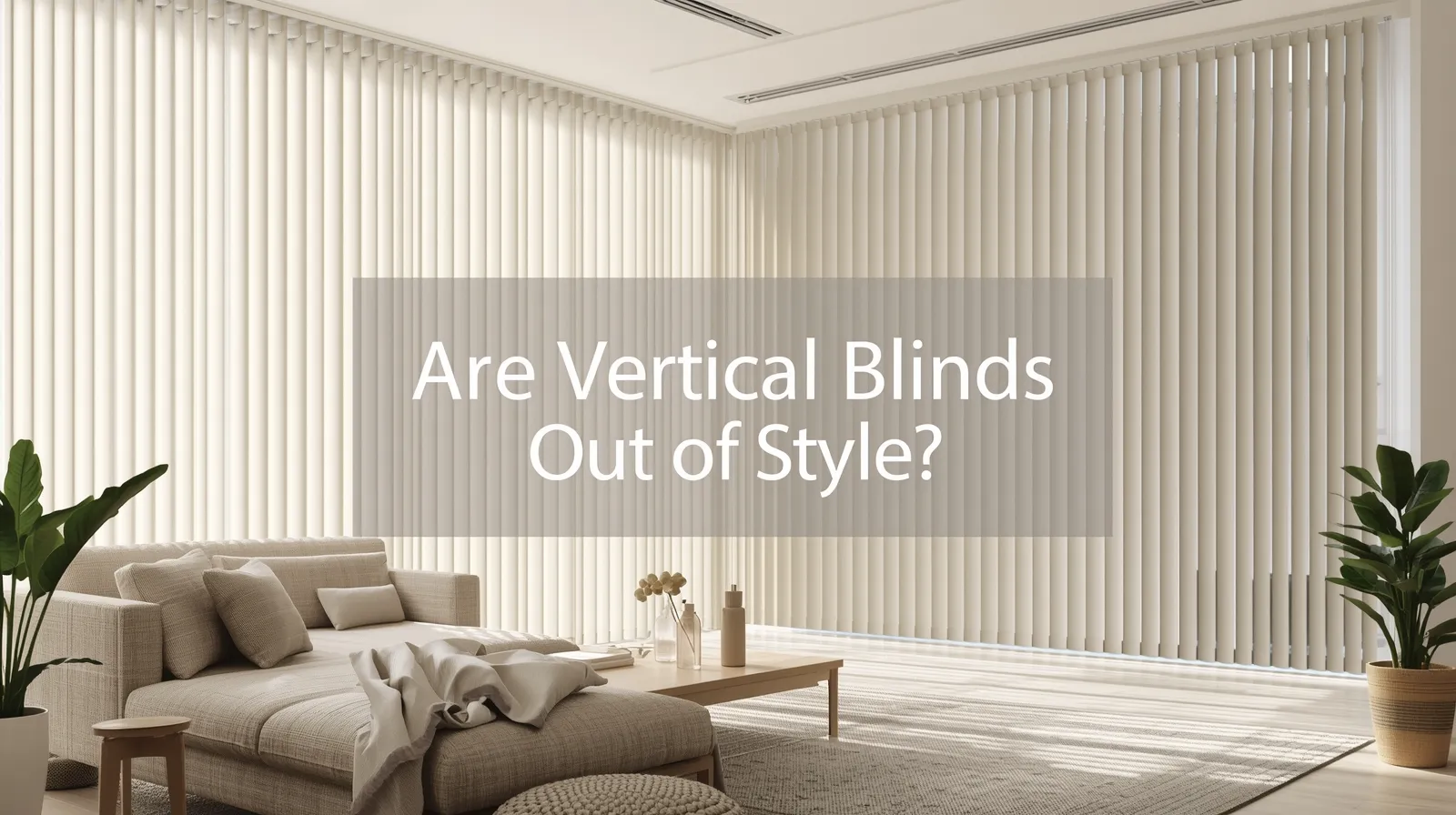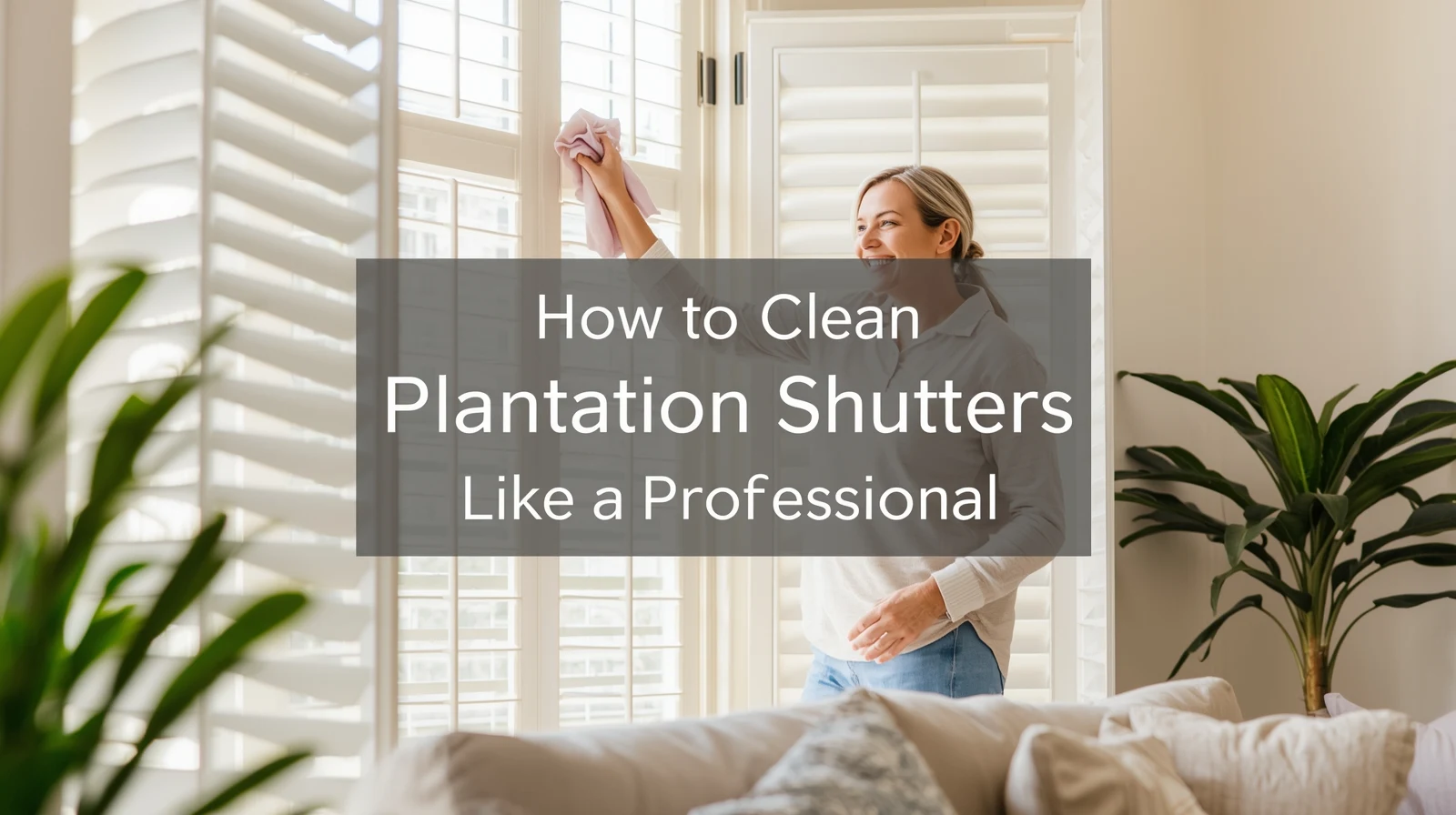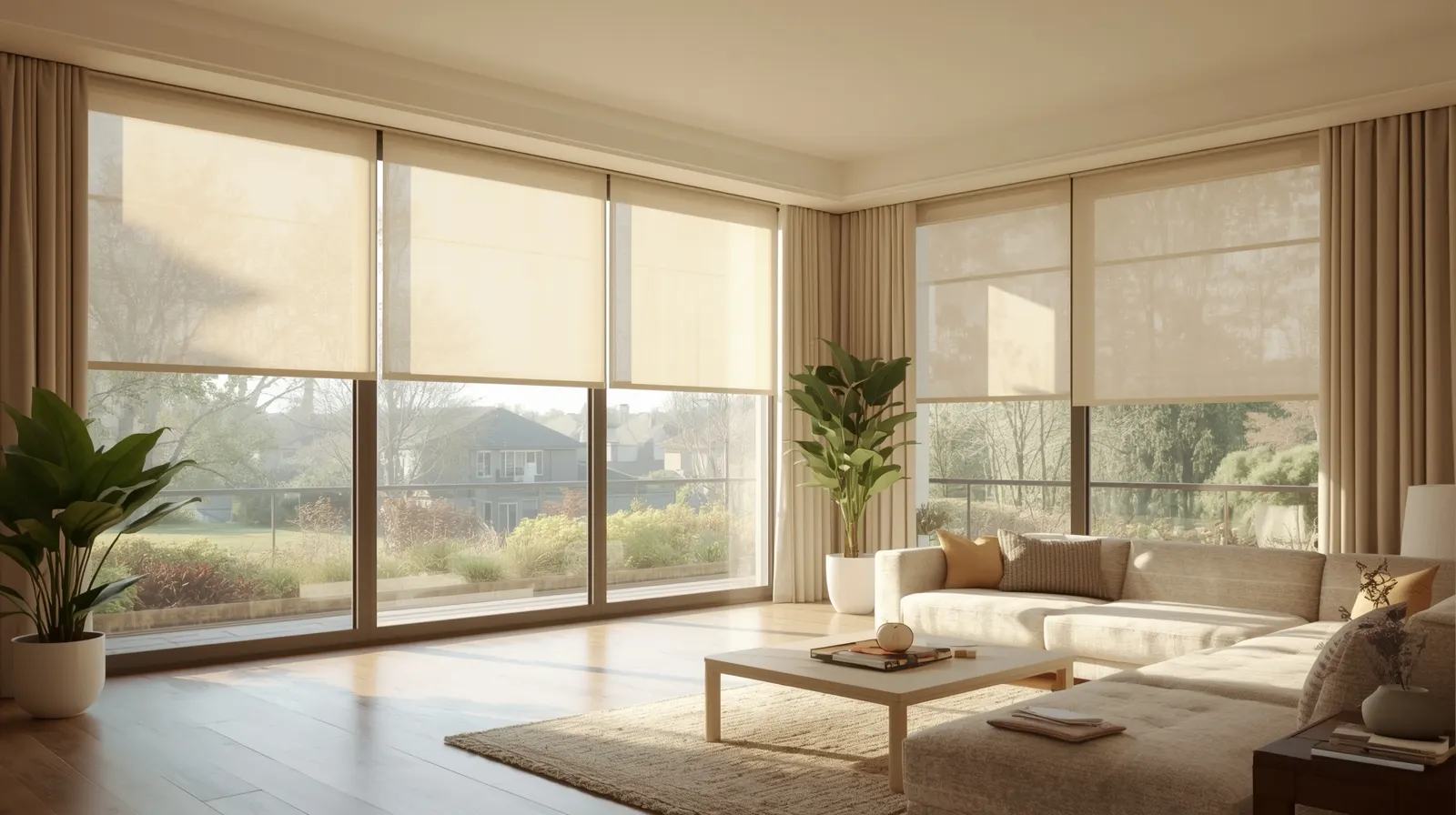When it comes to window treatments, one of the most common questions homeowners ask is about blinds up or down privacy. Blinds are more than just coverings; they are tools that manage light, regulate temperature, and protect personal space. Whether you live on a busy street, in an apartment building, or a quiet neighborhood, knowing how to angle your blinds makes a huge difference in how much privacy you enjoy.
This guide explores everything you need to know from how blinds work for privacy to which direction is best during the day, at night, and across seasons. By the end, you’ll understand how to use blinds not just as decoration, but as a key part of comfort and security in your home.
Why Window Blinds Matter for Light, Comfort, and Privacy
Blinds play a central role in creating balance in your living space. They aren’t just about blocking or letting in sunlight; they control how a room feels. When blinds face up or down, the effect on light, privacy, and temperature can be dramatic.
Think of a bright summer afternoon when sunlight is pouring into the house. Without adjusting blinds, your furniture gets hot, your room feels stuffy, and anyone outside can glance in. With a simple tilt of the slats, you can cool down the space, cut glare, and protect your privacy.
In the evening, blinds give peace of mind. As indoor lights shine, blinds make sure your living room isn’t on display for the neighborhood. This simple control adds comfort and security every day.
Understanding Blind Direction – Up, Down, or Tilted?
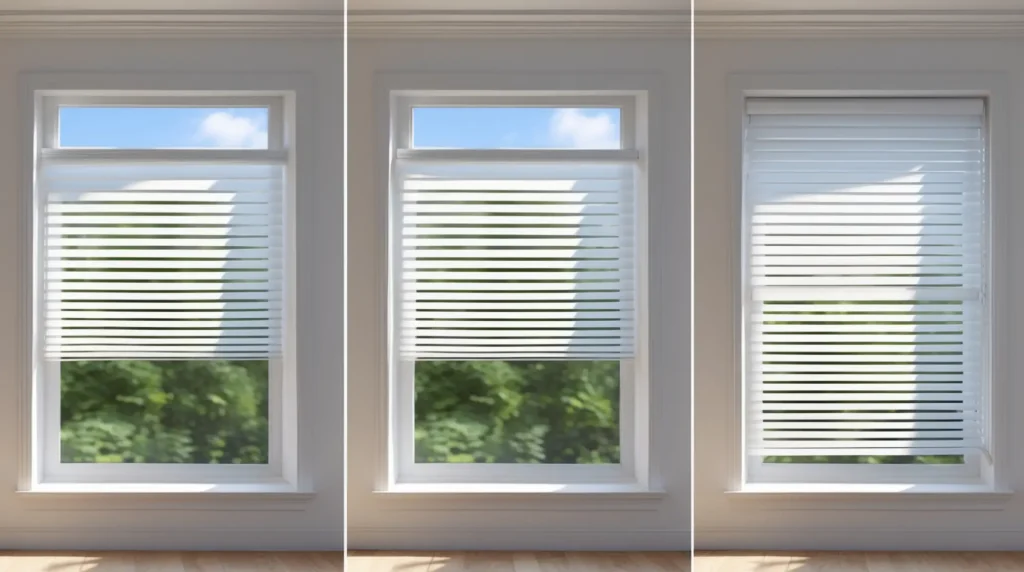
One reason people get confused about blinds is that there isn’t a single “right” answer for direction. Instead, it depends on what you want—light, privacy, or heat control.
- Blinds tilted upward: The slats point toward the ceiling. This angle blocks views from below, which is great for first-floor windows. It also bounces sunlight upward, keeping rooms cooler.
- Blinds tilted downward: The slats point toward the floor. This position blocks overhead sunlight, making rooms darker. At night, this angle helps reduce visibility from outside when lights are on.
- Blinds flat or horizontal: This position allows the most light to enter but provides the least privacy.
By turning blinds up or down, you get to choose what matters more in that moment light, comfort, or privacy.
Blinds Up or Down Privacy – Should You Close Them Up or Down?
The main question is clear: should blinds be up or down for privacy?
For most homeowners, tilting the slats upward during the day is best for privacy. This angle blocks people outside from seeing in, especially if they’re passing by on the street. It also allows a soft glow of light to brighten the room without letting in harsh rays.
At night, the answer often changes. With indoor lights on, tilting slats downward usually works better. This closes gaps that outsiders might use to peek in. While upward slats provide some protection, downward positioning creates a stronger barrier once the sun sets.
So, the best choice isn’t one direction all the time. Instead, it’s about adjusting based on time of day and the level of privacy you need.
How to Close Blinds for Privacy Without Blocking All Light
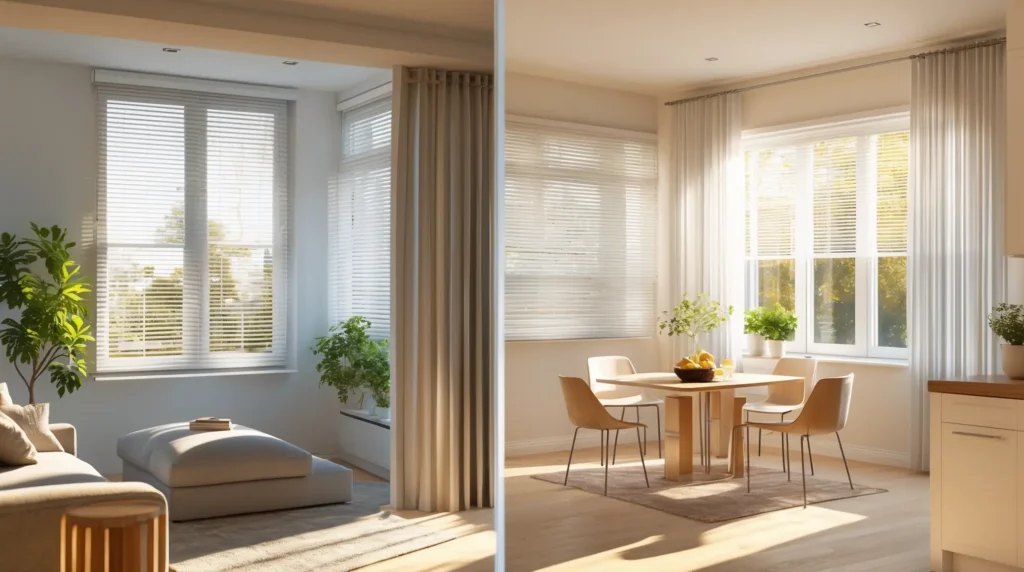
Some people think closing blinds for privacy means living in the dark, but that isn’t true. The secret is in the angle.
By tilting blinds slightly upward, you can stop direct views from outside while still letting natural light filter in. This way, you keep your privacy without making the room gloomy.
Another option is layering blinds with sheer curtains. The blinds provide direction control, while the curtains soften the light. This combination works especially well in living rooms and kitchens, where you want brightness but don’t want to feel exposed.
The best way to close blinds for privacy is the one that lets you feel secure without sacrificing comfort.
Blind Slats Up or Down – What Works Best for Daytime Privacy
Daytime privacy is different from nighttime privacy. During daylight, outside light is stronger, and people passing by can easily see into rooms if blinds are tilted the wrong way.
To get the best protection, turn blind slats upward during the day. This position blocks direct sightlines from outside, especially from ground level, while still allowing enough daylight to keep the room bright.
If you tilt the slats downward during the day, they might reduce overhead sunlight, but they also open small gaps that make it easier for outsiders to peek in. That’s why upward is the better option for daytime privacy.
Which Way Should Blinds Face at Night for Maximum Privacy
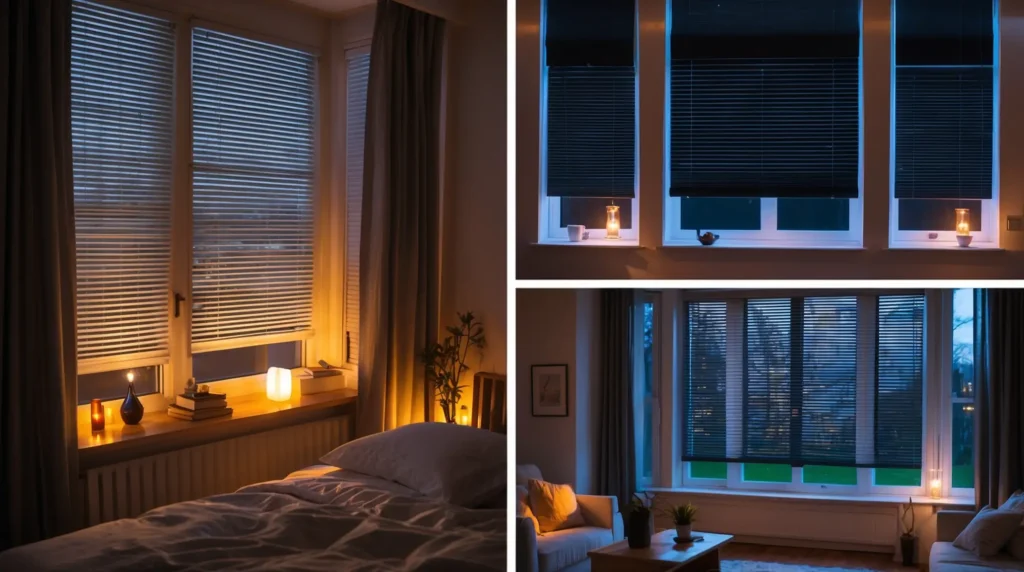
Nighttime brings different challenges. When indoor lights are on, it becomes much easier for anyone outside to see in. That’s why the direction of blinds matters even more at night.
For maximum privacy, tilt blinds downward. This angle prevents outsiders from seeing through the slats, even when your living room or bedroom lights are shining brightly. Downward-facing blinds create a more solid barrier, reducing visibility and giving you peace of mind.
Pairing blinds with heavy curtains or blackout shades can add an extra layer of protection. This is especially useful for bedrooms, where privacy is most important.
Managing Light and Heat – Blinds Up or Down for Sun, Summer, and Winter
Blinds do more than control privacy; they also affect energy use. Knowing how to angle them in different seasons can help keep your home comfortable while lowering energy bills.
- Summer: Tilt blinds upward to bounce sunlight toward the ceiling. This reduces heat buildup, lowers glare, and keeps rooms cooler.
- Winter: Tilt blinds downward to trap warmth inside. This reduces heat loss and keeps rooms cozy during cold months.
- Spring and fall: Adjust blinds throughout the day for balance upward in the afternoon when sunlight is strongest, downward in the evening to hold warmth.
Blinds are a simple but effective tool for managing both comfort and energy efficiency year-round.
First Floor vs. Second Floor – Setting Blinds for the Right Coverage
Privacy needs also depend on where your windows are located.
- First floor: Tilt blinds upward. This prevents pedestrians or drivers from looking inside. Since people pass by at ground level, upward slats block sightlines more effectively.
- Second floor: Tilt blinds downward. At this height, fewer people have direct views into your windows, and downward slats help reduce glare and sunlight.
If you want flexibility, consider layering blinds with sheer or blackout curtains. That way, you can adjust your privacy and light control differently for each floor without sacrificing style.
Expert Tips on Adjusting Blinds for Style and Security
Beyond privacy and light, blinds can also affect how safe and stylish your home feels. Here are some expert tips:
- Daytime privacy: Keep slats tilted upward to block views while keeping rooms bright.
- Nighttime security: Tilt slats downward to create a stronger shield when lights are on inside.
- Stylish layering: Add curtains or drapes for a polished look while enhancing privacy.
- Travel safety: Change blind directions regularly or use motorized blinds. This makes your home look occupied even when you’re away.
Learning how to turn blinds for privacy and how to angle them properly gives you control over both design and safety.
Choosing the Right Window Blinds in Norco, CA with JMR Blinds
Blinds aren’t one-size-fits-all. The right choice depends on your window size, location, and lifestyle. That’s where local expertise makes all the difference.
At JMR Blinds, we’ve helped homeowners find the perfect solutions for privacy, light, and energy efficiency. From horizontal blinds to advanced motorized systems, our team knows how to match products to your needs.
Whether you’re wondering about blinds up or down for privacy or exploring energy-saving styles, our experts are here to guide you. With professional installation and personalized service, we make sure your blinds are more than coverings; they become part of your home’s comfort and style.
Conclusion
Blinds are more than just a finishing touch for windows. They give you control over light, privacy, and even energy costs. Knowing whether to tilt them up or down and when makes a big difference in daily comfort.
During the day, upward-facing blinds protect privacy while keeping rooms bright. At night, downward-facing blinds give stronger coverage when lights are on. Across the seasons, adjusting slats helps regulate heat and save energy. By applying these simple adjustments, you create a home that feels both private and comfortable.
Ready to upgrade your windows? Contact JMR Blinds today and discover blinds that balance style, comfort, and privacy perfectly for your home.

